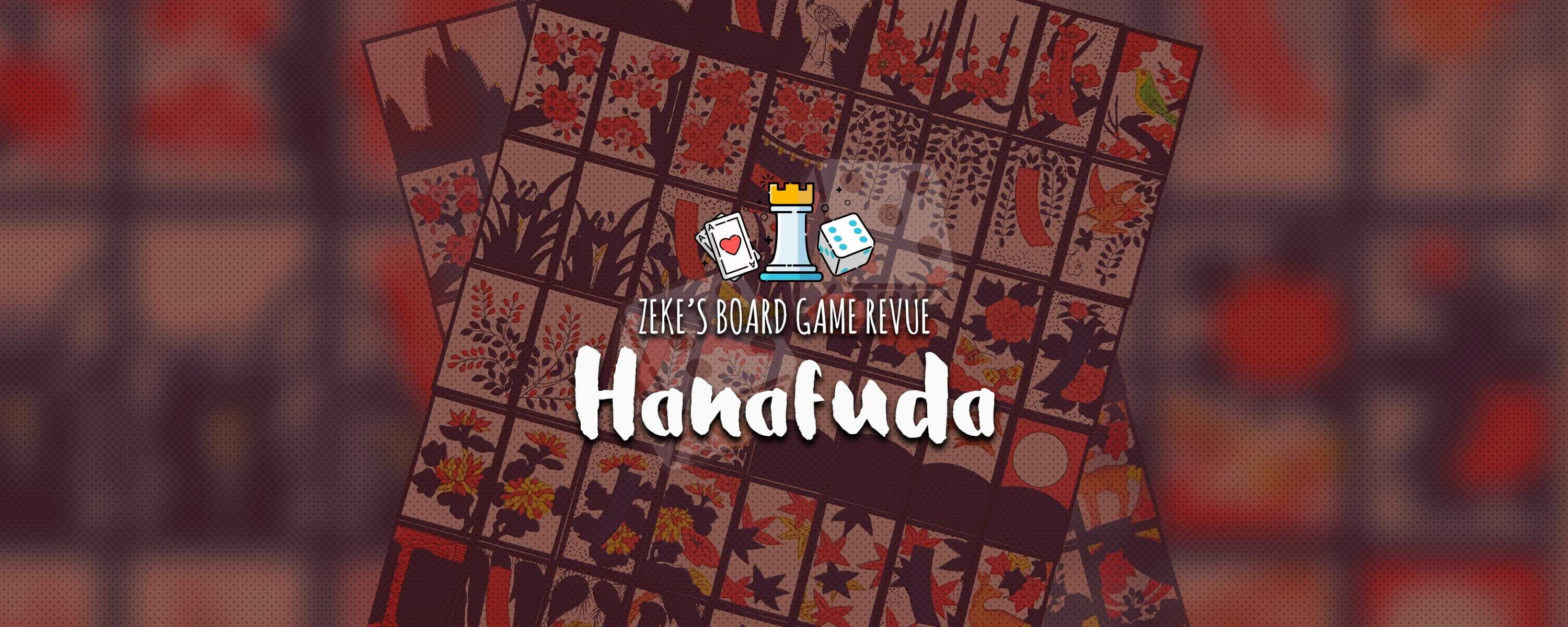Hey hey, Zeke has returned with a new (old) game! We’re going back to another classic from Japan, Hanafuda. Now, Hanafuda (花札 or “flower cards”) is the name of both a certain deck of cards as well the games played with them. Today I’ll be looking at the game of Koi-Koi in particular. I’ll go over a little history of the cards and then we’ll jump right into the rules.
History
Playing cards arrived in Japan in 1549, imported by a Portuguese missionary and the crew of his ship. They brought with them a 48 card deck for playing a game called Hombre. The cards became popular for gambling but were banned in 1633 when Japan was closed off from the outside world. Because only foreign cards were banned, new decks were invented so that people could continue to gamble. When one of these decks would become too popular, they would again be banned, prompting new decks to be created. This game of cat and mouse continued until the government realized that people would always play card games, and lessened their restrictions. Hanafuda cards have found success in both Japan and abroad, with the cards being very popular in South Korea and Hawaii.
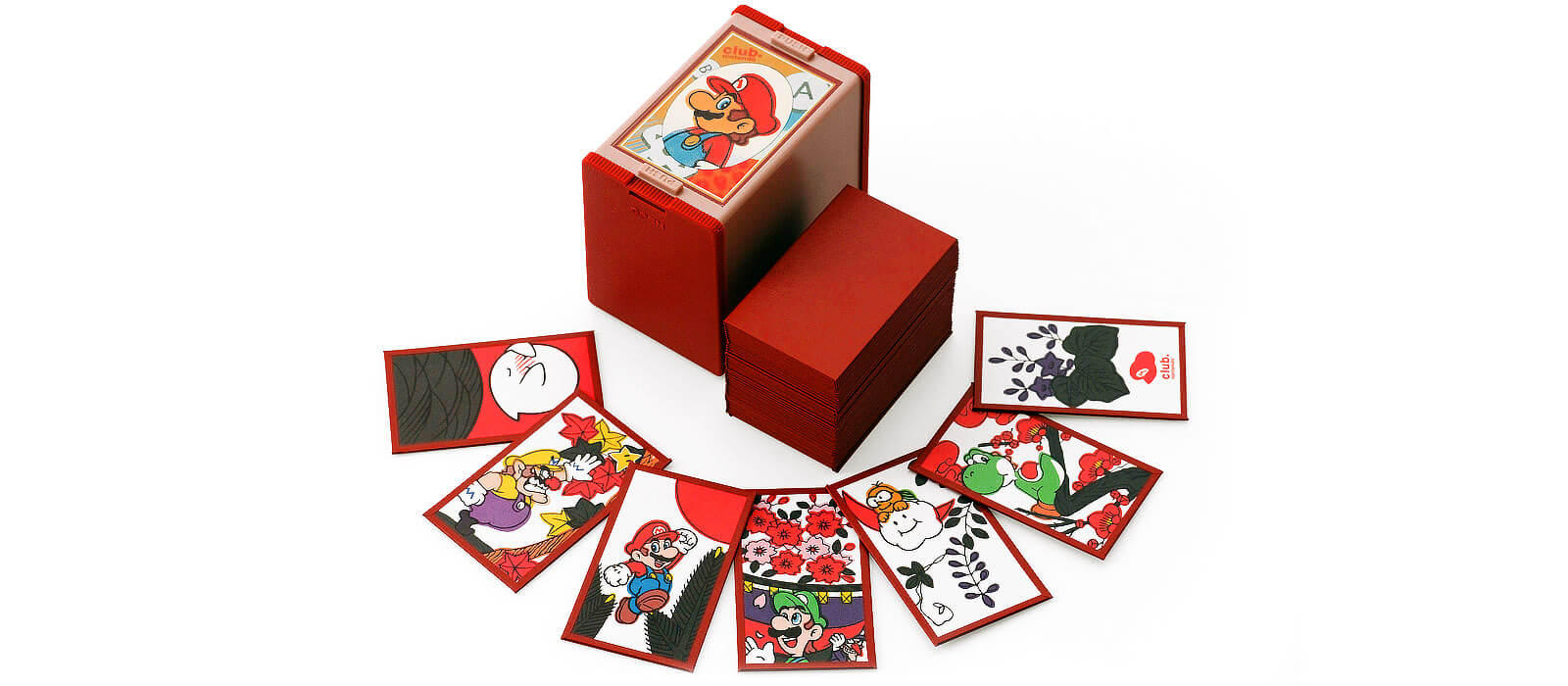
A little story some of you may not know is that in 1889, Nintendo Koppai (yes, that Nintendo!) was founded for the purpose of making Hanafuda cards. In fact, they still produce and sell the cards in Japan!
Equipment
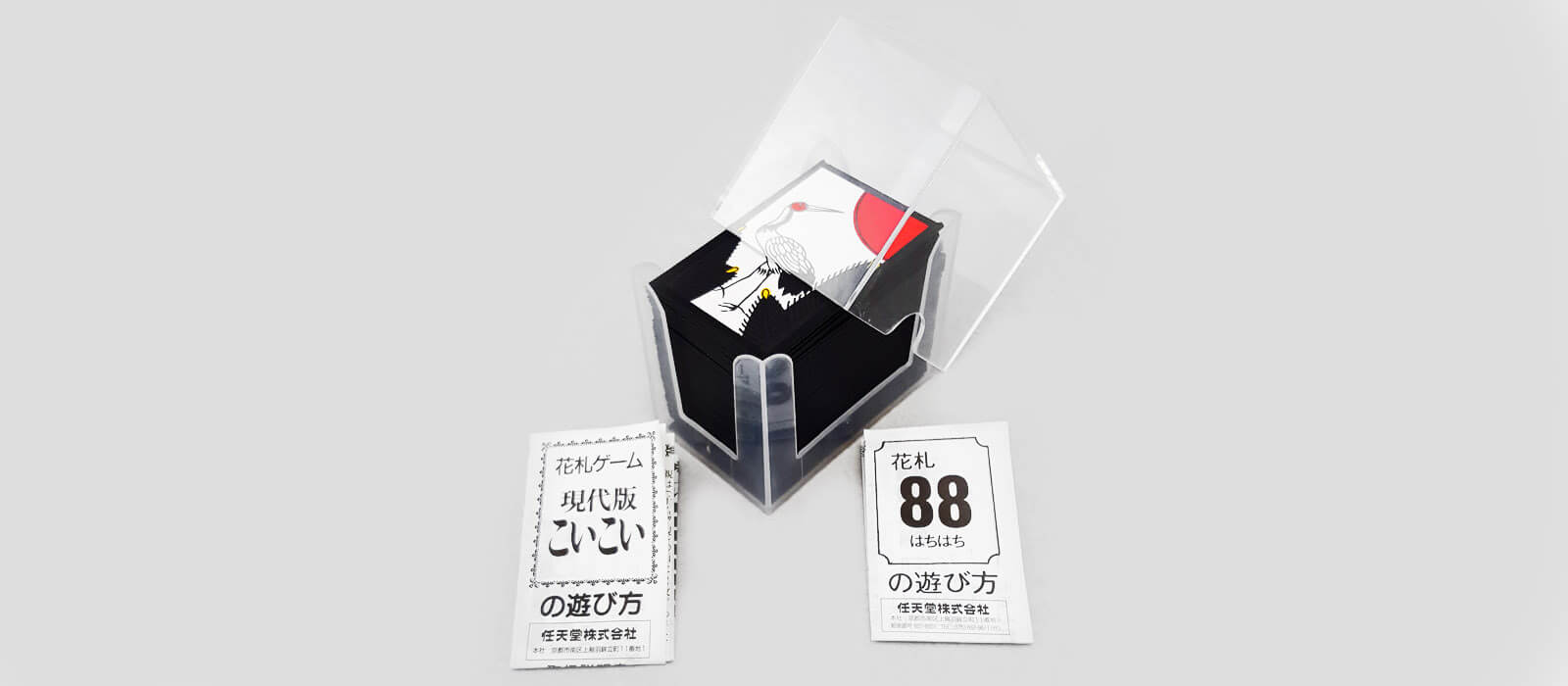
A Hanafuda deck is composed of forty-eight cards, twelve suits of four cards apiece, one suit for each month. Each month has a flower associated with it. Every card also has a point value, but this is largely just for bookkeeping, as each game uses its own scoring. Most month’s suits have two “normal” cards (cards with simply an image of the month’s flower) and two “specials” (cards with an image of the flower and a special image of some kind). I’ll include the cards’ point values in parentheses in each month’s listing (normals are always worth one).
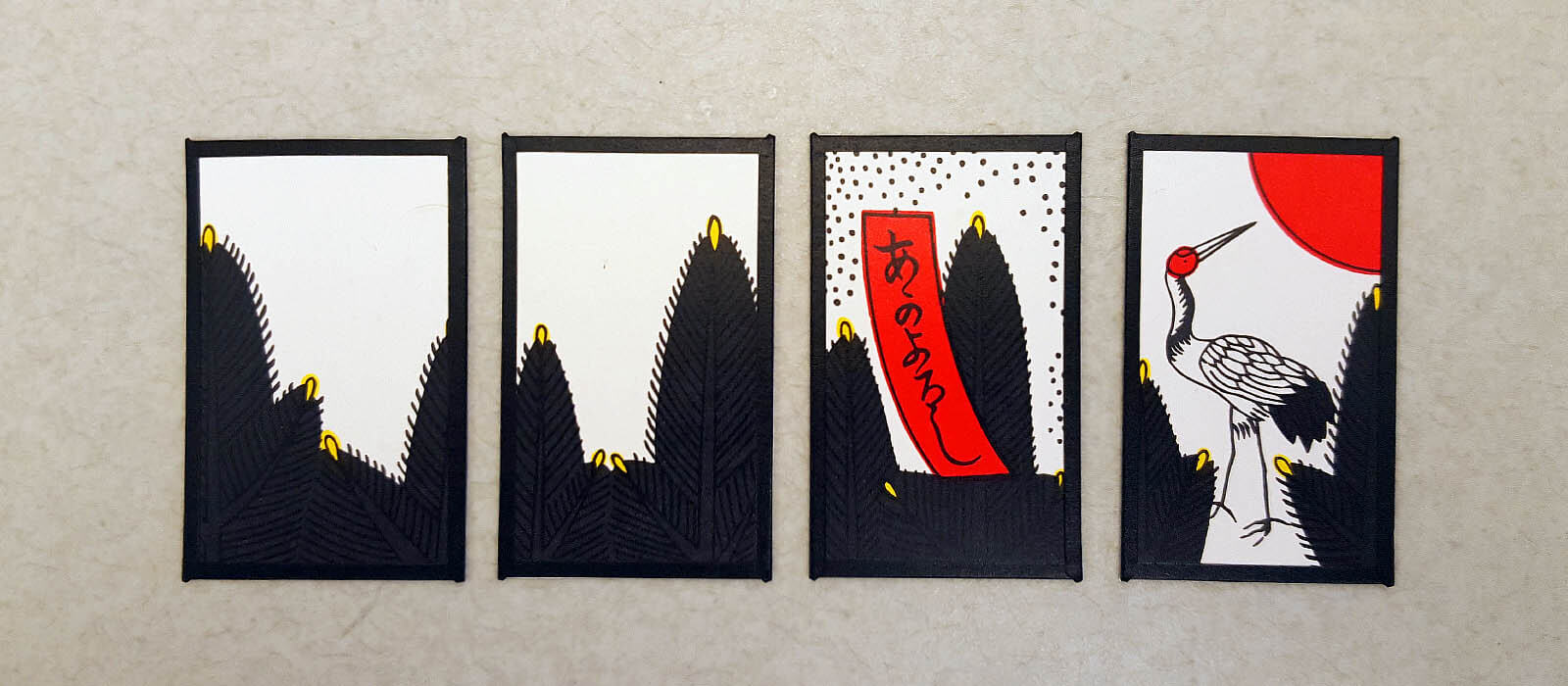
Up first is January. This month’s flower is the pine. There are two normals and two specials. The specials are a poetry ribbon (5 points) and a crane with the sun (20 points).
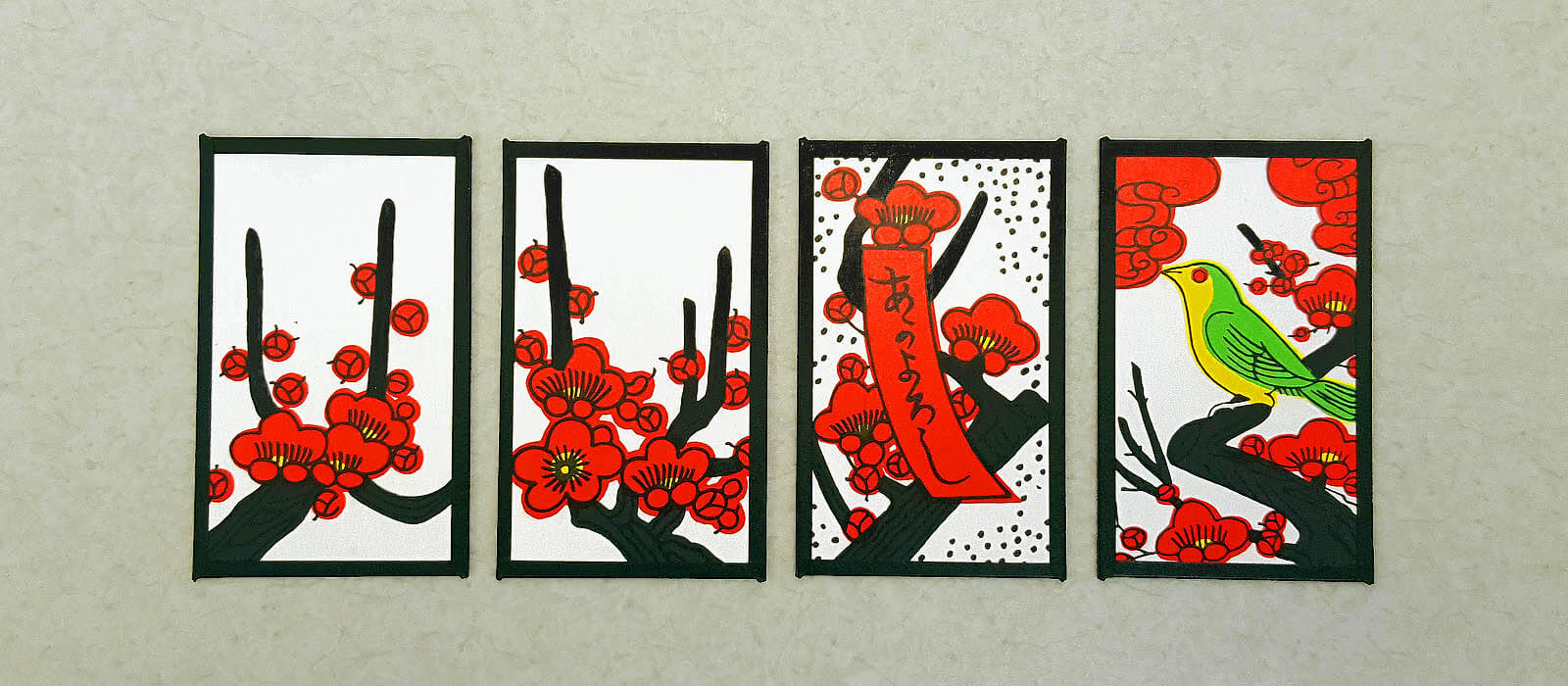
February’s flower is the plum blossom. There are two normals and the specials are a poetry ribbon (5 points) and a bush-warbler in a tree (10 points).
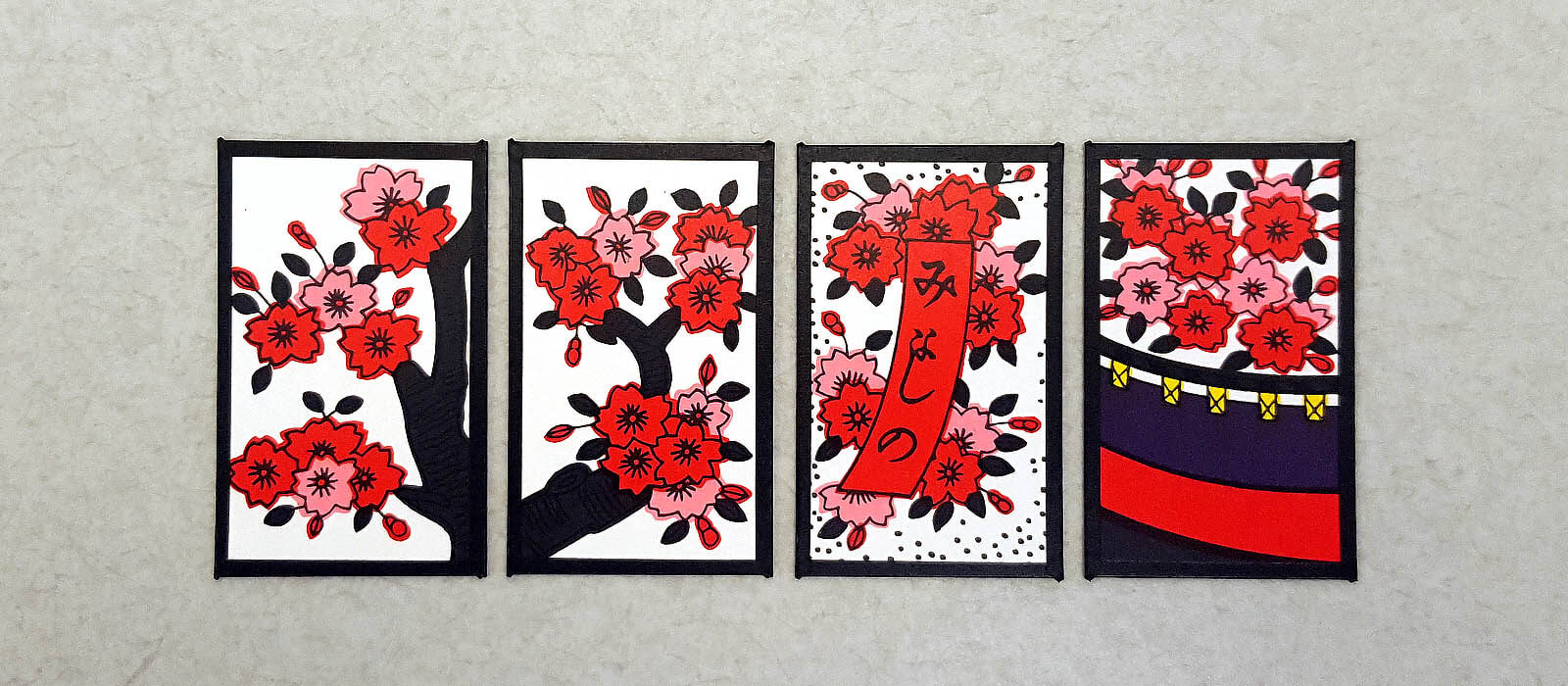
The flower for March is the famous cherry blossom. This time the specials are another poetry ribbon (5 points) and a camp curtain (20 points). What’s a camp curtain? Well, traditionally, this was the curtain put up around a military encampment. In the modern day, these curtains are used in festivals and theaters.
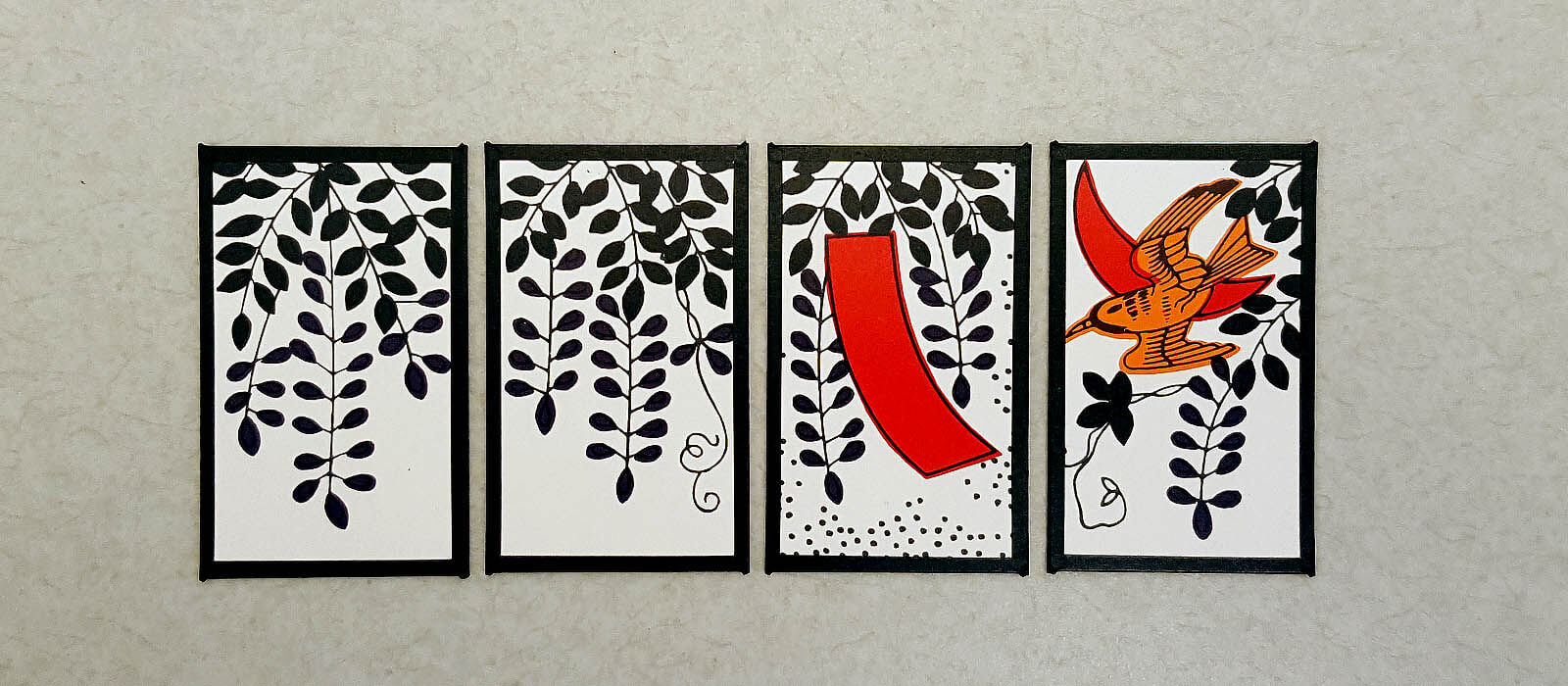
April is the month of the wisteria. The two specials for this month are a red ribbon (5 points) and the cuckoo (10 points).
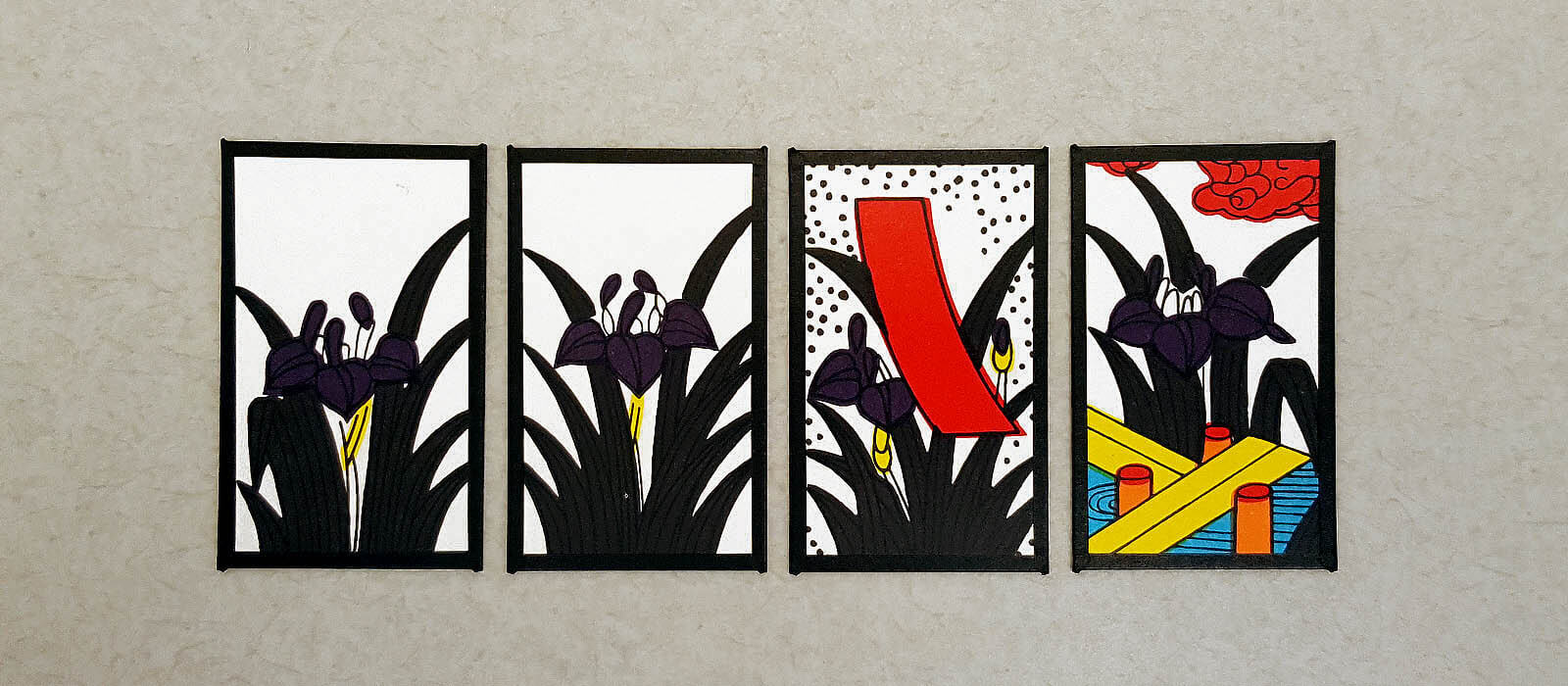
The month of May is represented by the iris. The specials for May are a red ribbon (5 points) and a water iris with an eight-plank bridge (10 points).
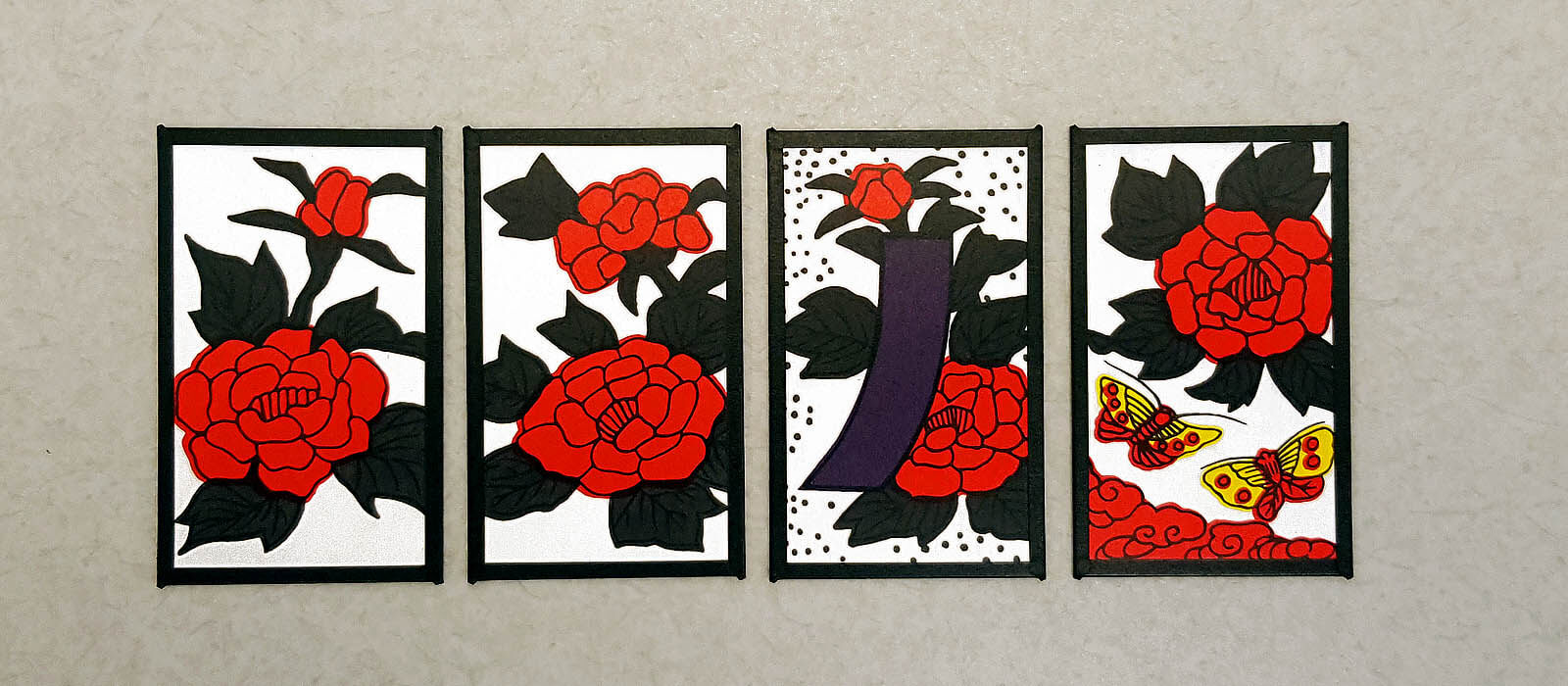
June is represented by the peony. This month has the specials of a purple ribbon (5 points) and butterflies (10 points).
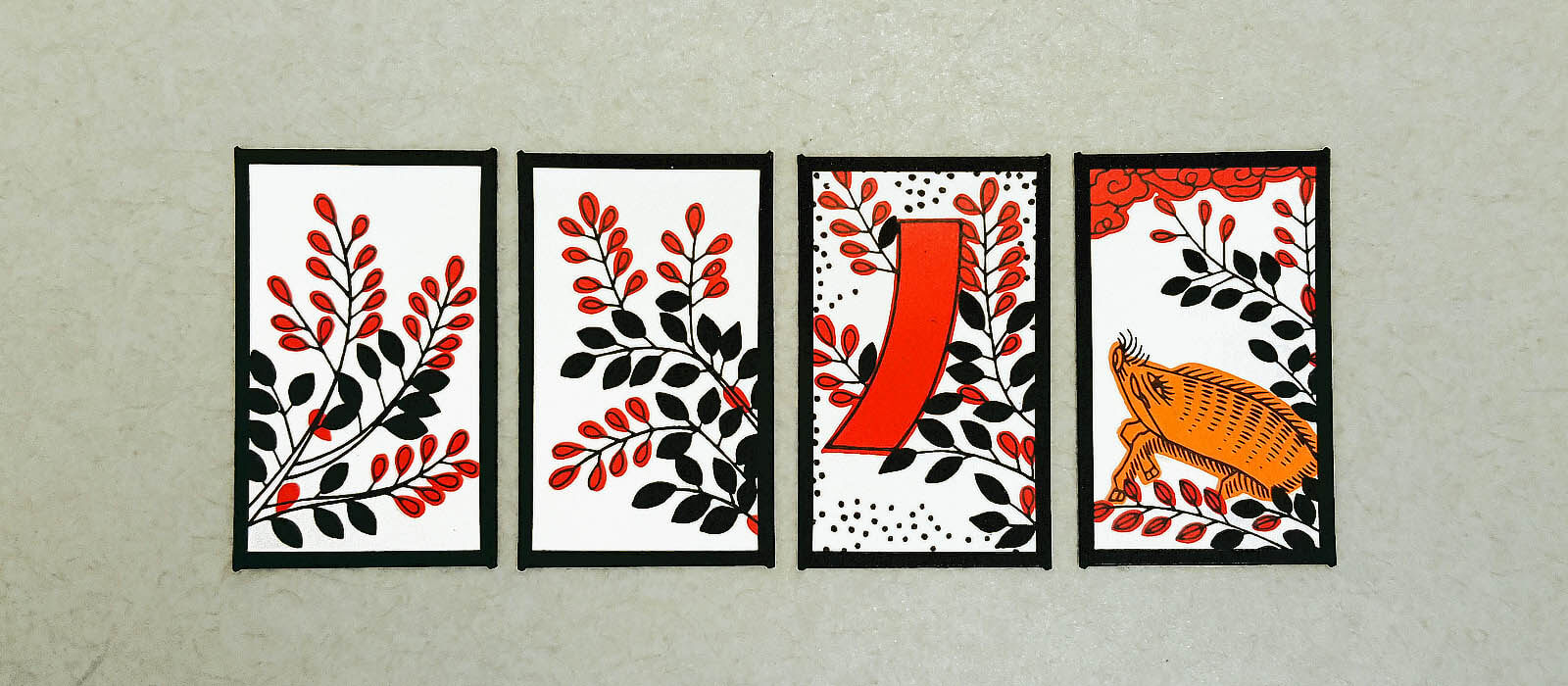
In spot seven is the bush clover for July. A red ribbon (5 points) and a boar (10 points) are this month’s specials.
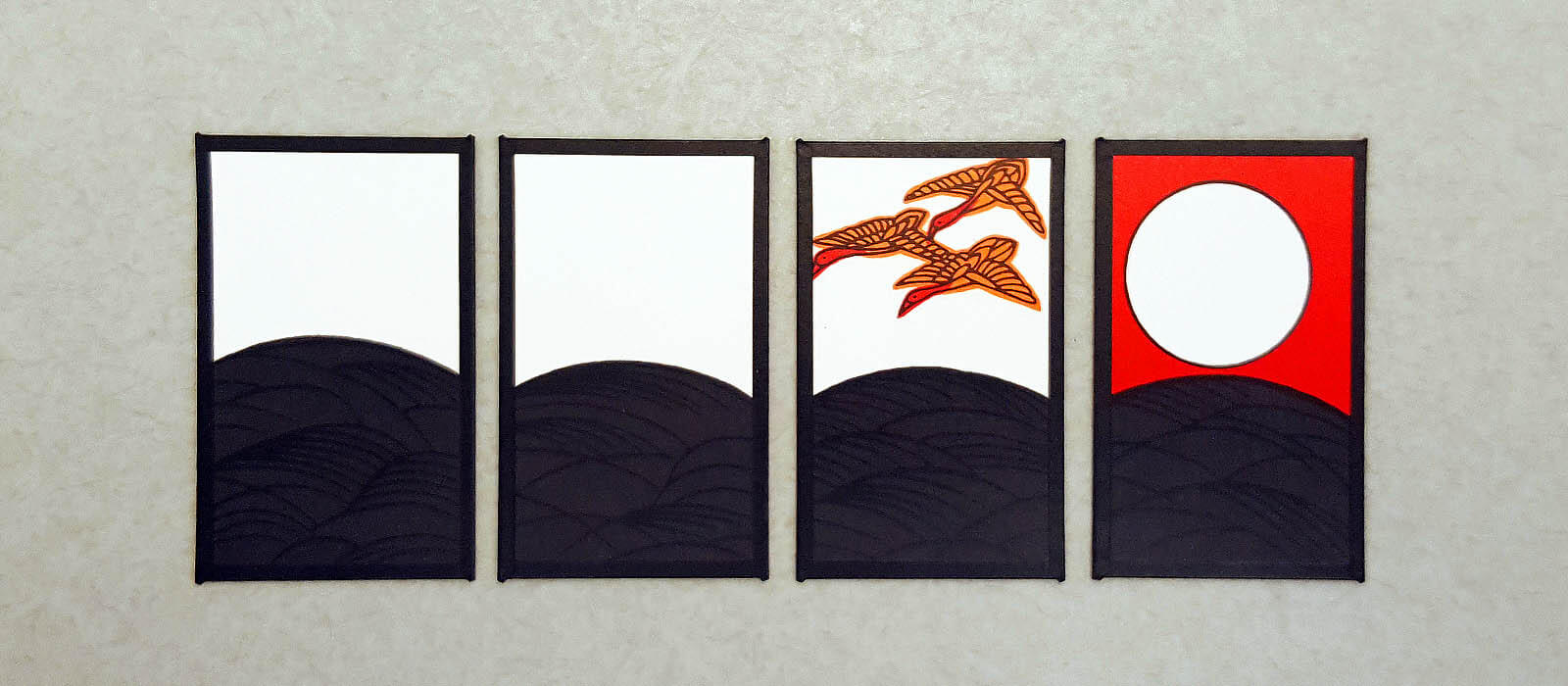
August’s flower is susuki grass. The specials for this month are geese in flight (10 points) and a full moon over a red sky (20 points).
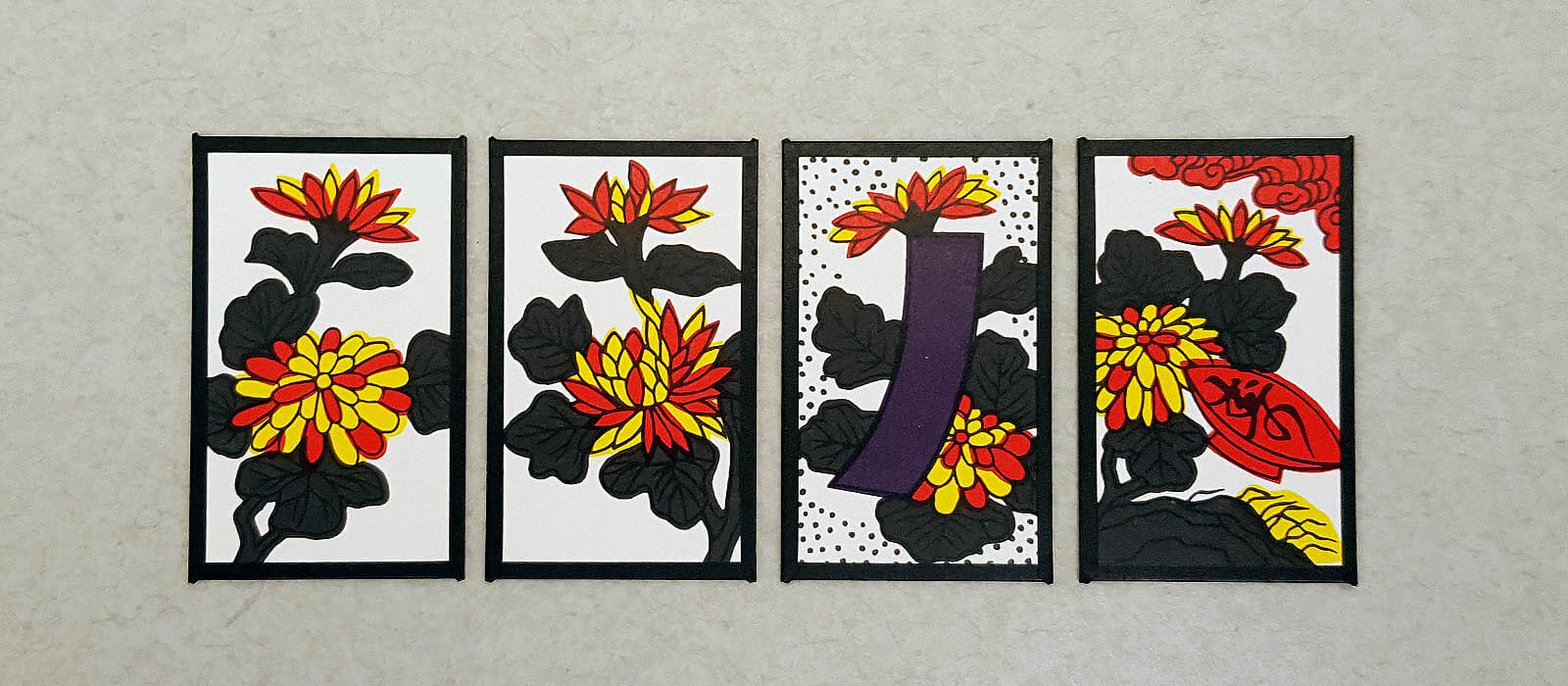
September is represented by the blooming chrysanthemum. We have another purple ribbon (5 points) as well as a sake cup with poetry on it (10 points).
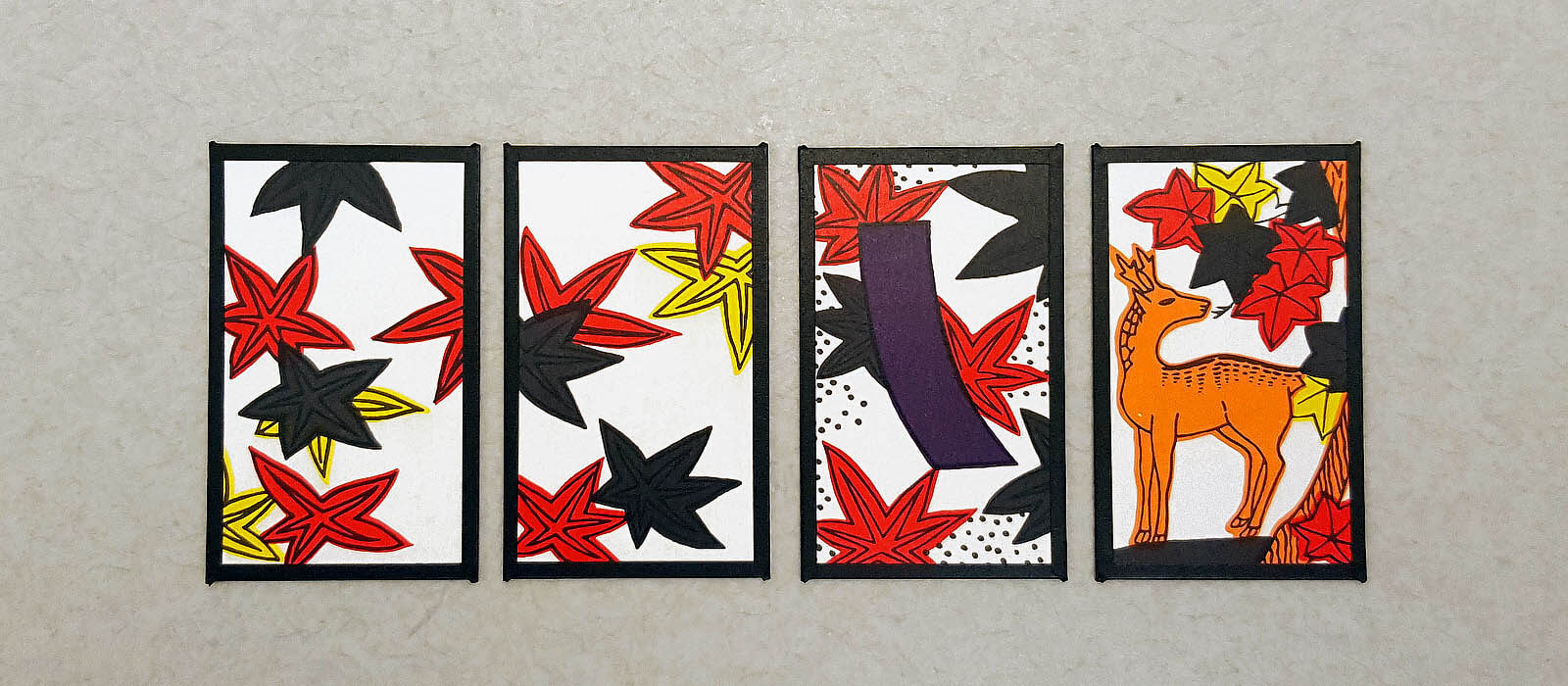
The flower of October is the maple. This month’s specials are a purple ribbon (5 points) and a deer (10 points).
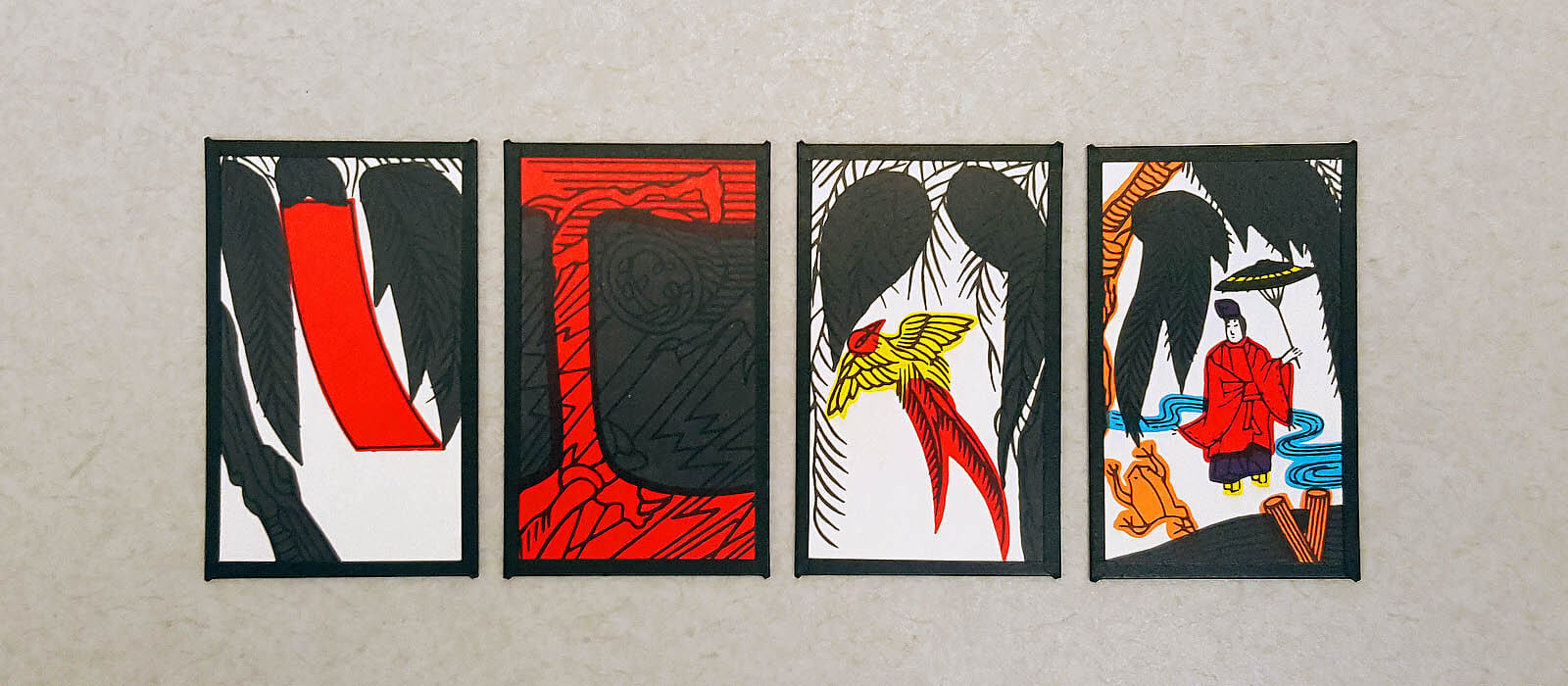
In second to last, we have the willow for November. This one is an odd one. It has three specials (well, four really): a red ribbon (5 points), lightning (1 points), a swallow (10 points), and one with a long description: Ono no Michikaze with an umbrella and a frog (20 points). Who is Ono no Michikaze? He was a famous calligrapher who is considered the founder of the Japanese style of the art.
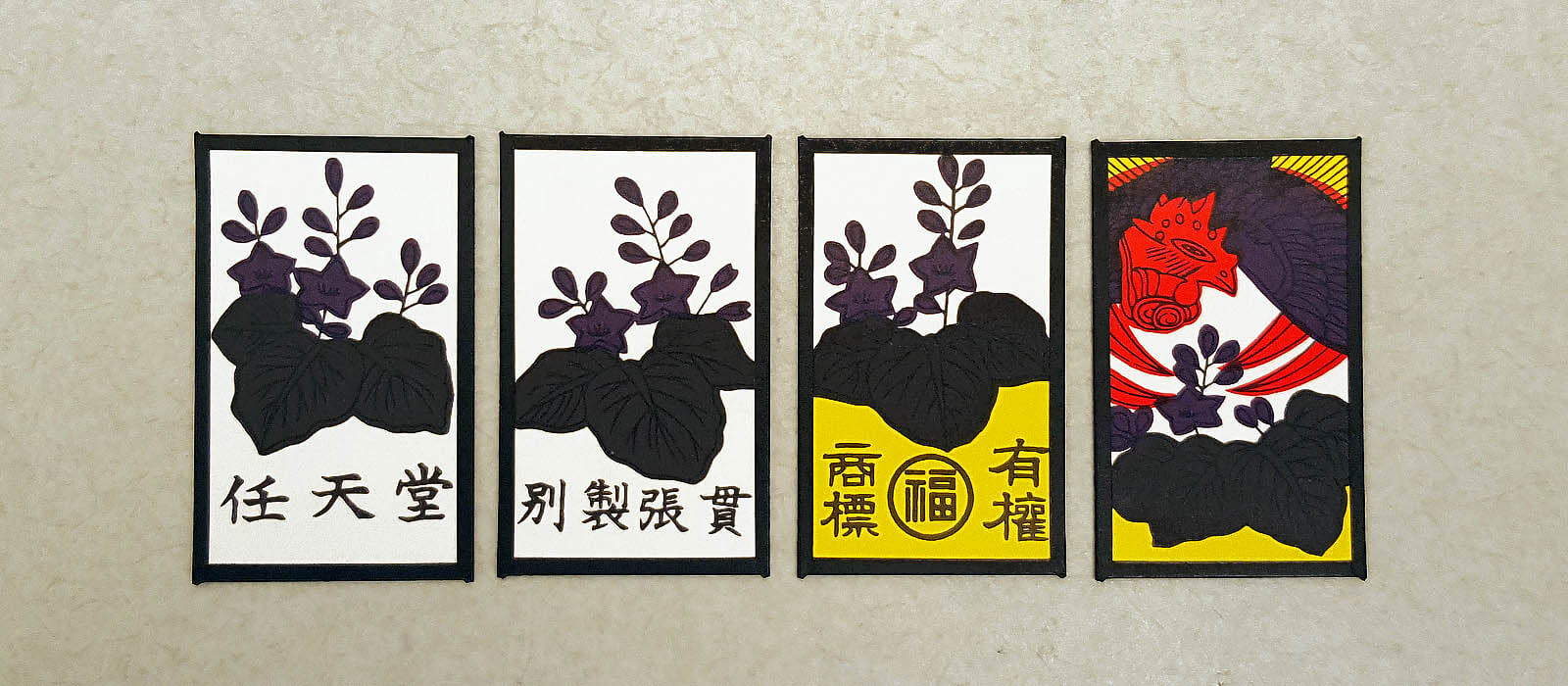
The final month, December is represented in Hanafuda by the paulownia. This suit is another strange one. It has three normals (though one is colored yellow at the bottom). The one special for this month is a Chinese phoenix (20 points).
Set up and Gameplay
The game we will be looking at that uses these beautiful cards is called Koi-Koi. “Koi-koi” means “come on” and is said when a player wants to continue the game (more on that in just a bit). This game is actually quite easy to play, once you can recognize the cards and know the point values.
To start, the deck of cards is shuffled. It is interesting to note that, unlike western playing cards, Hanafuda cards are rigid and not meant to bend. This makes shuffling feel a little different than a traditional deck.
After the deck is shuffled, a starting player or “parent” is selected for the hand. The parent deals out the cards, first eight cards face down to his opponent, then eight face up in the center of the table, and finally, eight cards face down to themselves. The remaining cards form the draw pile and are placed next to the face-up cards.
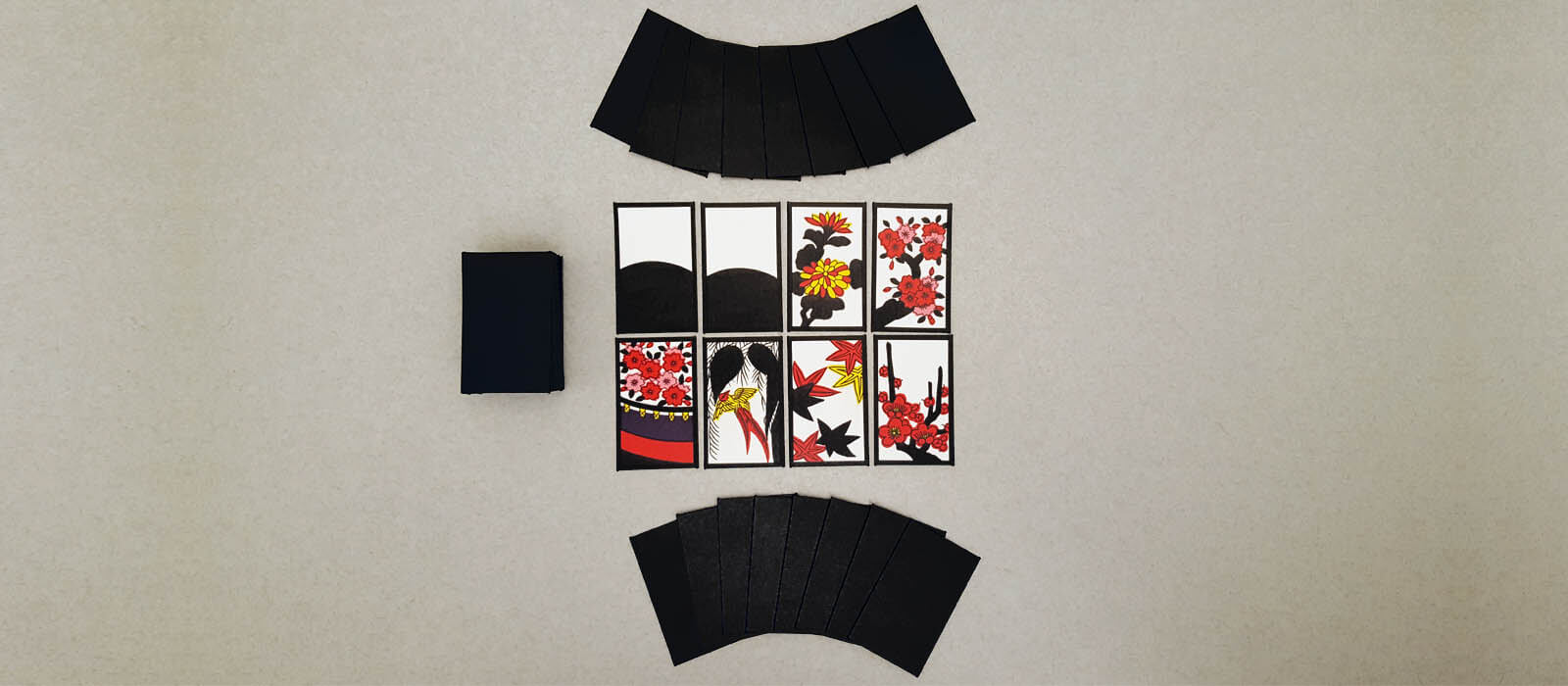
After the cards have been dealt, play starts with the parent. On a player’s turn, they may attempt to match a card in their hand to a card on the table by suit. If they cannot, they must discard a card, face up, to the center of the table. Whether they make a match or not, the active player must flip up the next card on the deck and place it in the center. If it forms a match, the player takes the drawn card and its match and adds it to their point pile. If a card matches multiple cards, only one is chosen.
Play then progresses to the next player, who makes the same choices and hopefully makes their own matches. This continues until a player has a yaku (yes, like in mahjong) or scoring combination. If no one gets a yaku by the time the deck runs out, the same player deals again and the next hand begins. After a yaku has been achieved, the player must decide whether to go out and keep the points they have earned, or call koi-koi, continuing to try and score more points.
But watch out, if your opponent goes out after you call koi-koi, they get double points! Additionally, if you score over 7 points, your score is doubled. So if you can accumulate 7 points and go out before an opponent who has declared koi-koi, you get a whopping quadruple point! Parent is then passed to the player with the most points. Generally, a game lasts twelve of these rounds but may be of any length.
What are the yaku? I’ve summarized them below:
Akatan – 5 points – All three red poetry ribbons. 1 point for each additional 5 point card.
Akatan, Aotan no Chofuku – 10 points – All the red poetry ribbons and the three purple ribbons. 1 point for each additional 5 point card.
Ame-Shiko – 7 points – Any four 20 point cards, including the 20 point November card.
Aotan – 5 points – All three purple ribbons. 1 point for each additional 5 point card.
Goko – 15 points – All five 20 point cards.
Hanami-zake – 5 points – The camp curtain and the sake cup. Can be combined with tsukimi-zake.
Inoshikacho – 5 points – The boar, the deer, and the butterflies. 1 point for each additional 10 point card. Naruto fans may recognize this yaku, as the name of the three-man team formed by Ino, Shikamaru, and Choji is InoShikaCho.
Kasu – 1 point – Any ten 1 point cards (or ten normals).
Sanko – 6 points – Any three 20 point cards, not including November’s.
Shiko – 8 points – Any four 20 point cards, not including November’s.
Tane – 1 point – Any five 10 point cards. 1 point for each additional 10 point card.
Tanzaku – 1 point – Any five 5 point cards. 1 point for each additional 5 point card.
Tsukimi-zake – 5 points – The moon and the sake cup. Can be combined with hanami-zake.
There are also two special hands that cause instant wins or re-deals. If a player is dealt either four cards of the same suit (teshi) or four pairs of cards with matching suits (kuttsuki), they are awarded 6 points and play proceeds to the next hand. If the table is dealt either of these hands, the hand is voided and is reshuffled and re-dealt.
Wrap up
My first experience with Koi-Koi and Hanfuda cards, in general, was in the game Club House Games for the Nintendo DS. In addition to a whole host of games (including a couple I’ve covered before), it includes a Koi-Koi game, likely a callback to Nintendo’s origins as a card manufacturer. Now admittedly, when I was first playing I would just match random cards together when I could and be happy if I won. I was more interested in the aesthetic of these cards. They didn’t have numbers like I was used to and the pictures were so detailed. Of course, later I learned what everything meant and was able to better follow along (though scoring still confused me…)
Why do I bring all this up? Well, even though I couldn’t understand what was happening in the game, it still caught my attention & stuck out to me, so I gave it a try. Even when I got my own set of the Nintendo produced cards, the instructions were in Japanese so I still didn’t exactly know how to play. But with this series, I get the chance to sit down and study a game, learning all I can about it so I can share it with you readers. I’m not saying I’ve found my new favorite game, but I am more than eager to put my newfound knowledge to the test.
So if you ever see a game that catches your interest, don’t be afraid to sit down and watch it for a while. Even if you have no idea what’s going on, give it a try. Who knows what you will find? Maybe even your next passion.
See you next time on Zeke’s Board Game Revue!
If you want to learn more about various games that use Hanafuda, be sure to check Wikipedia here.
Interested in owning the game? You can purchase Hanafuda on Amazon.

Featured Sponsor - JAST
The sweetest romance and the darkest corruption, the biggest titles and the indie darlings; for visual novels and eroge, there's nowhere better.
Big thank you to our supporters
From their continous support, we are able to pay our team for their time and hard work on the site.
We have a Thank-You page dedicated to those who help us continue the work that we’ve been doing.
See our thank you page